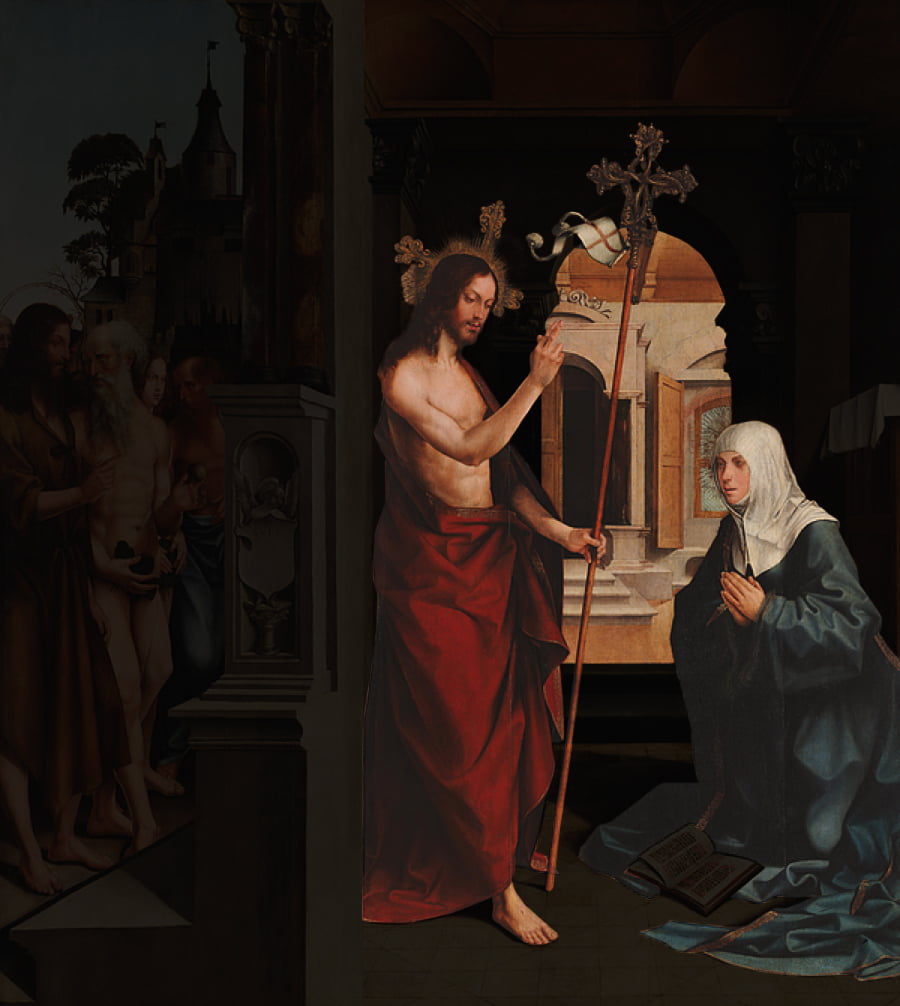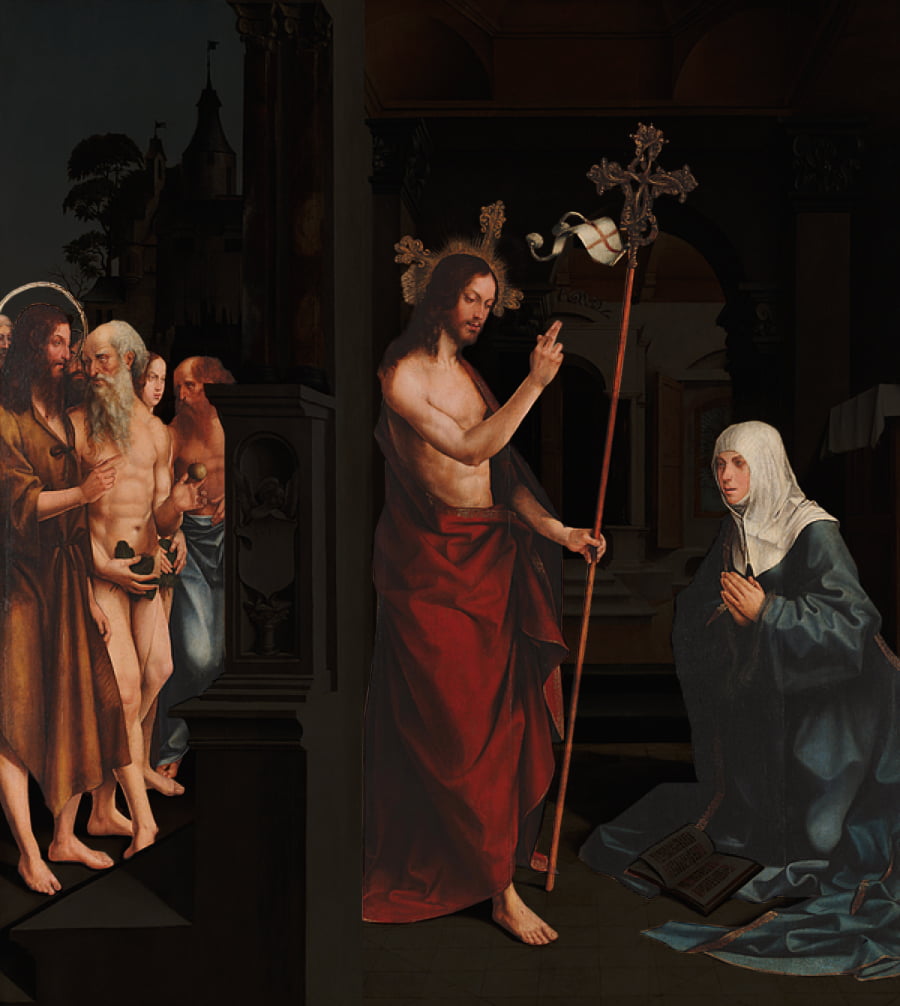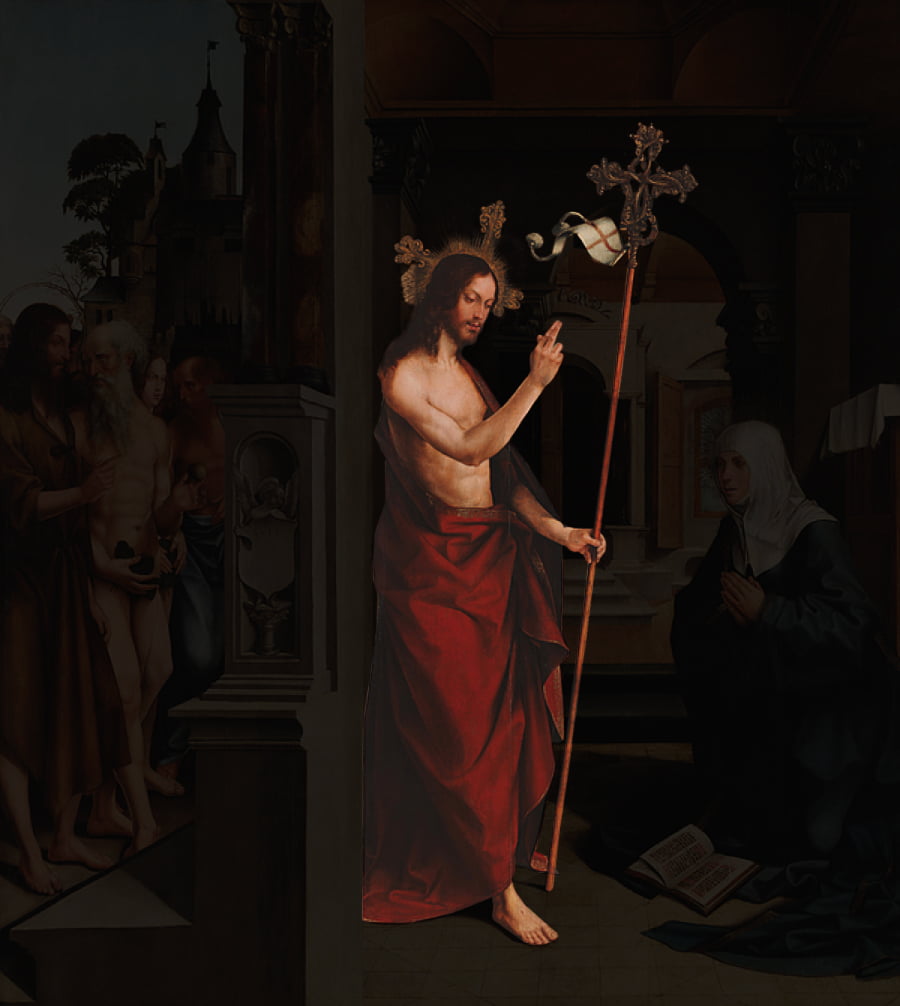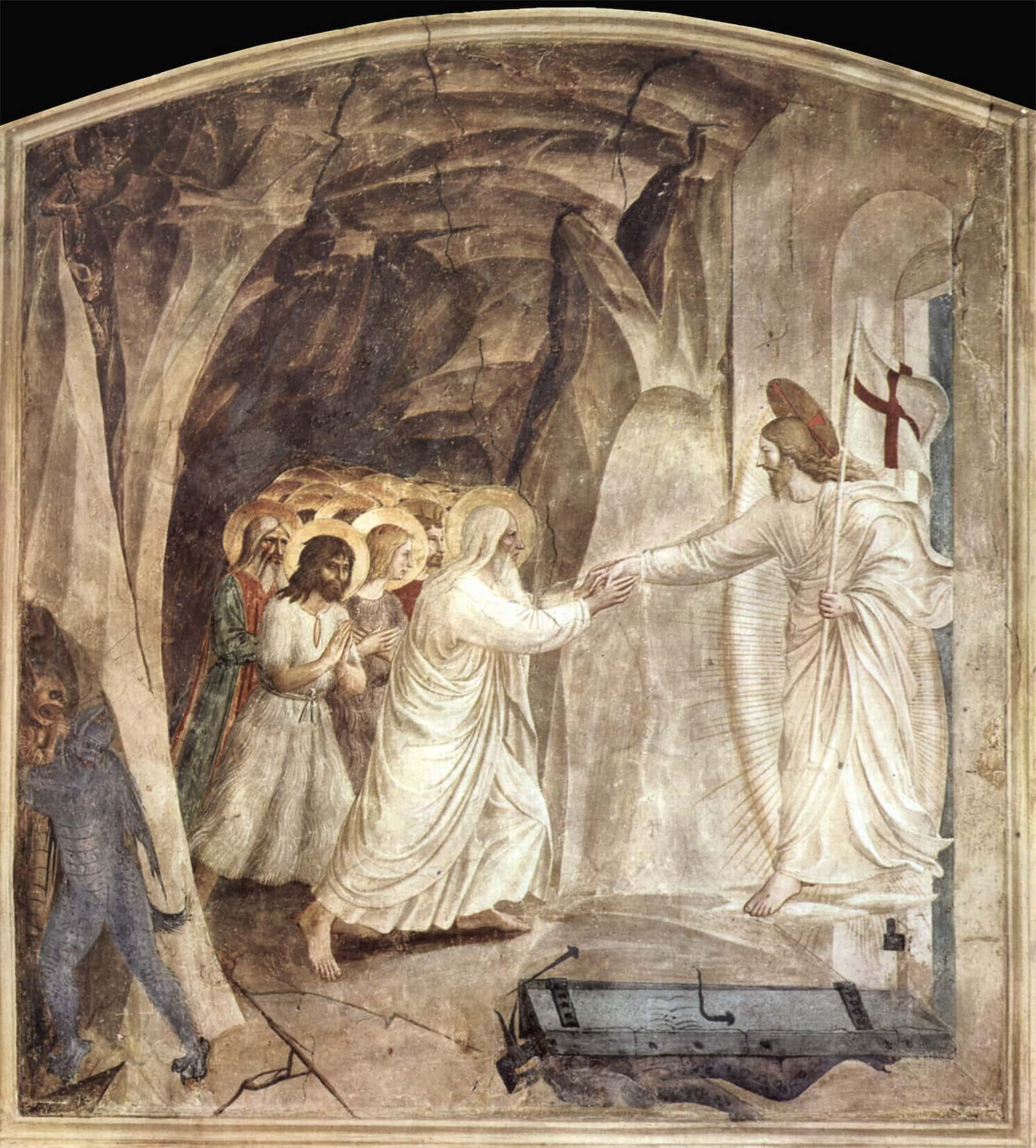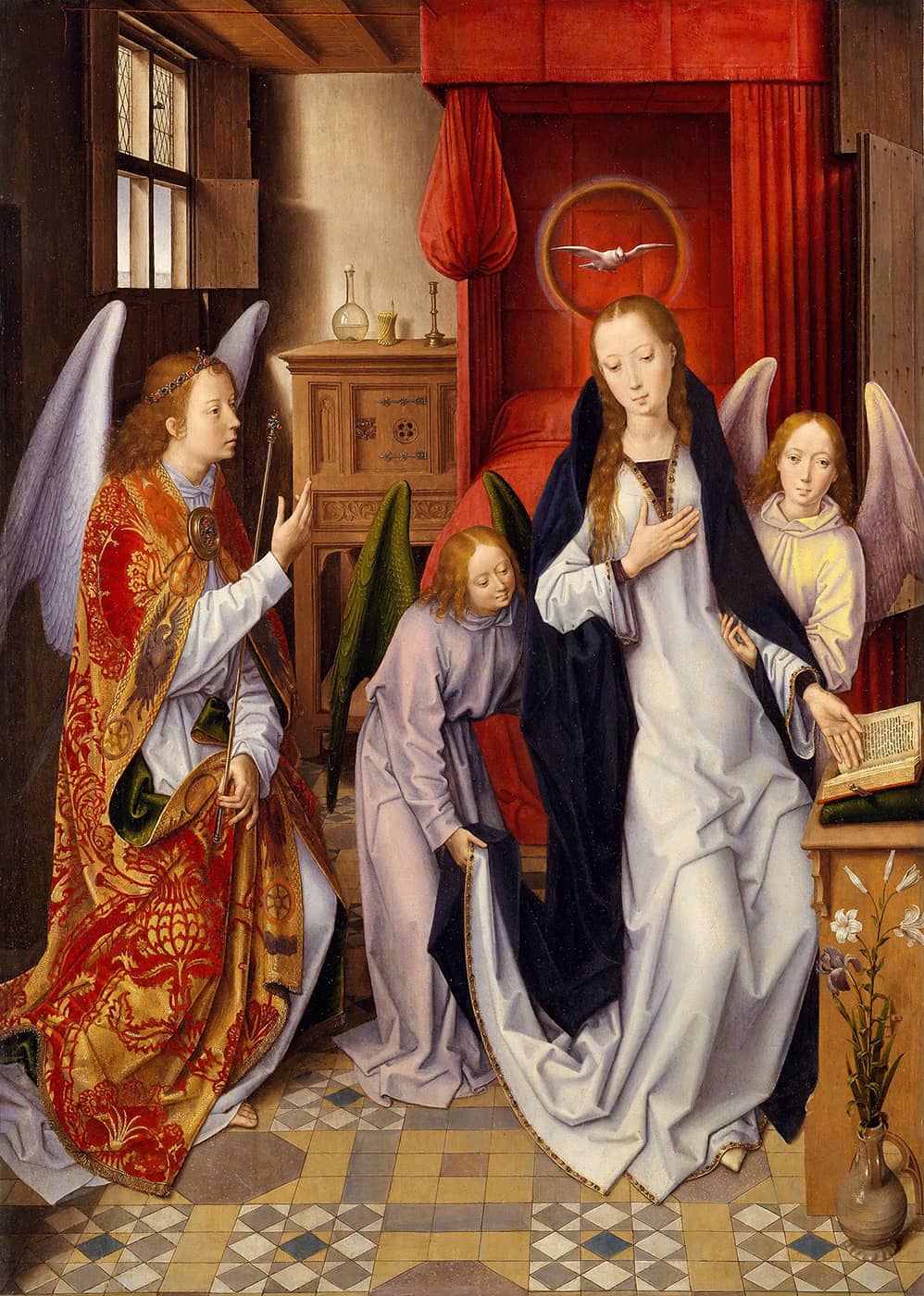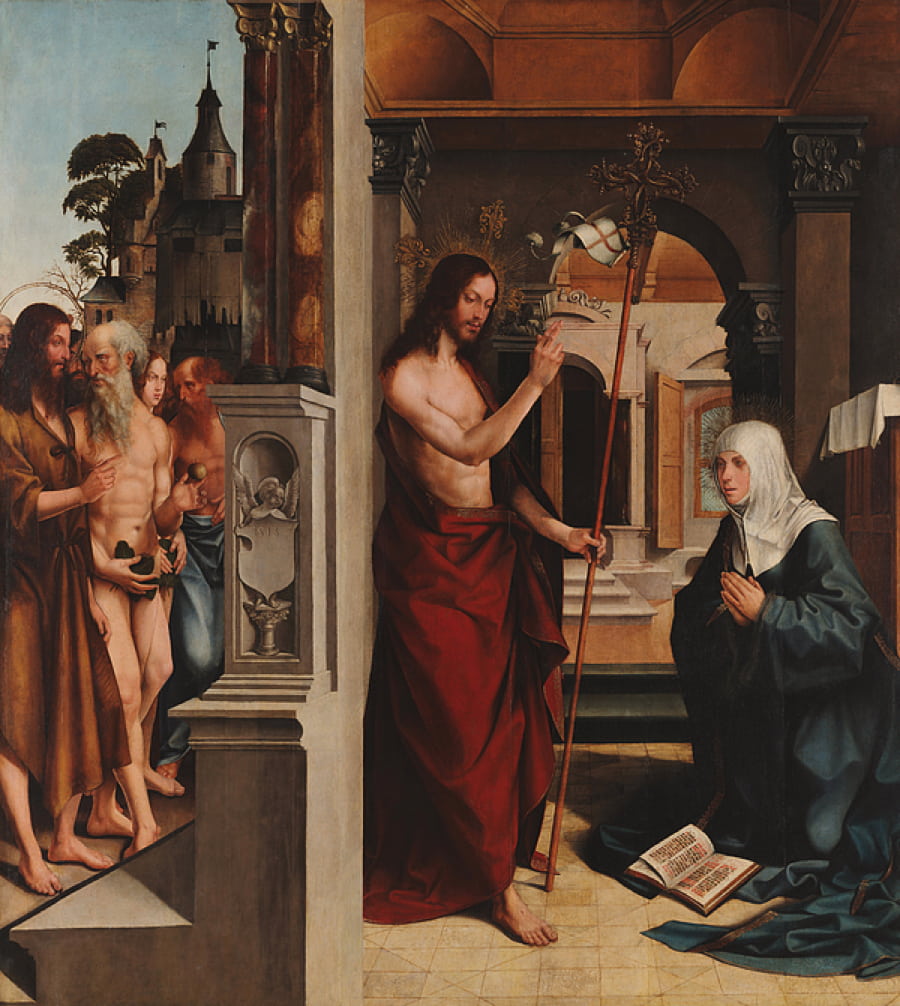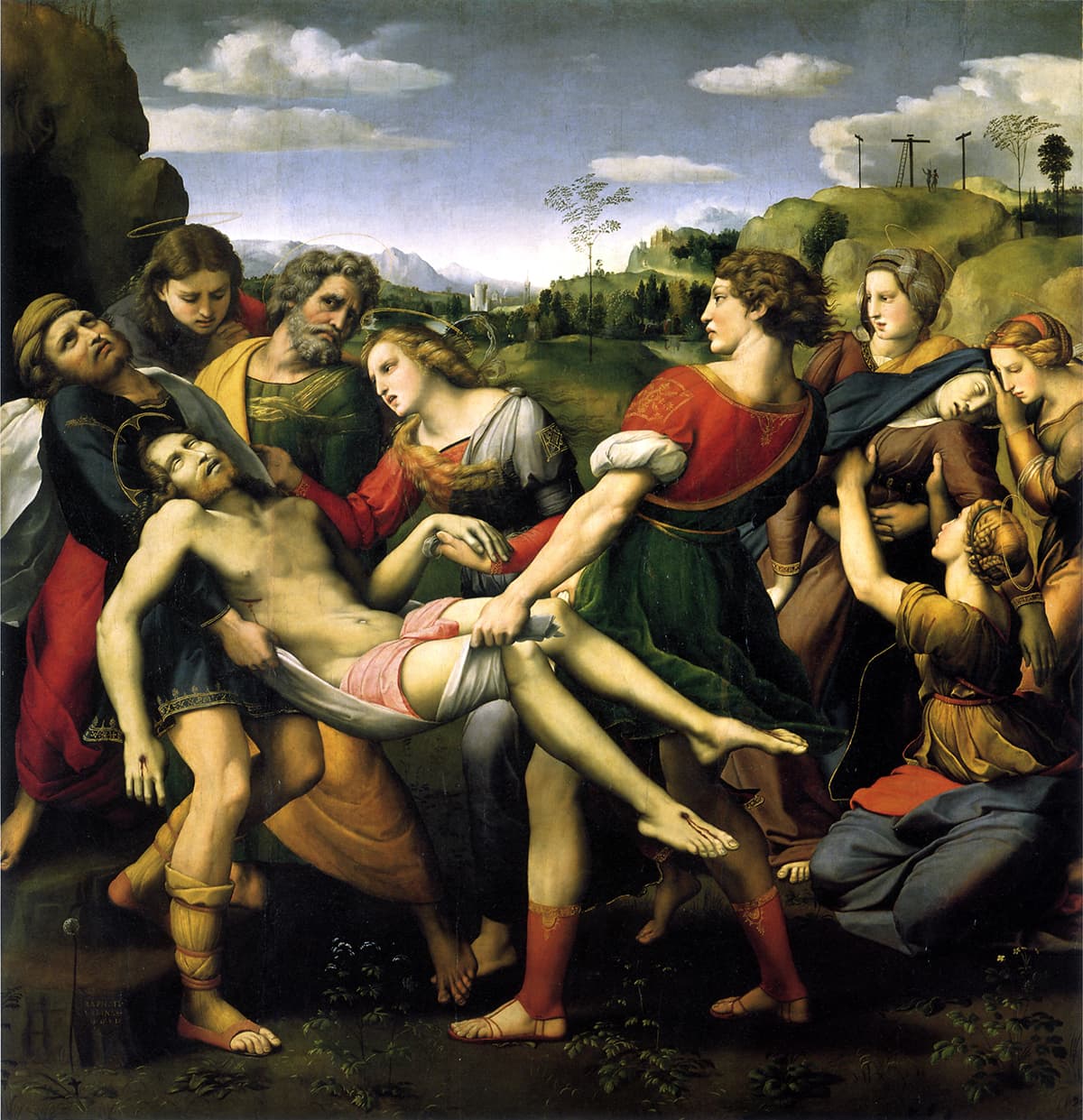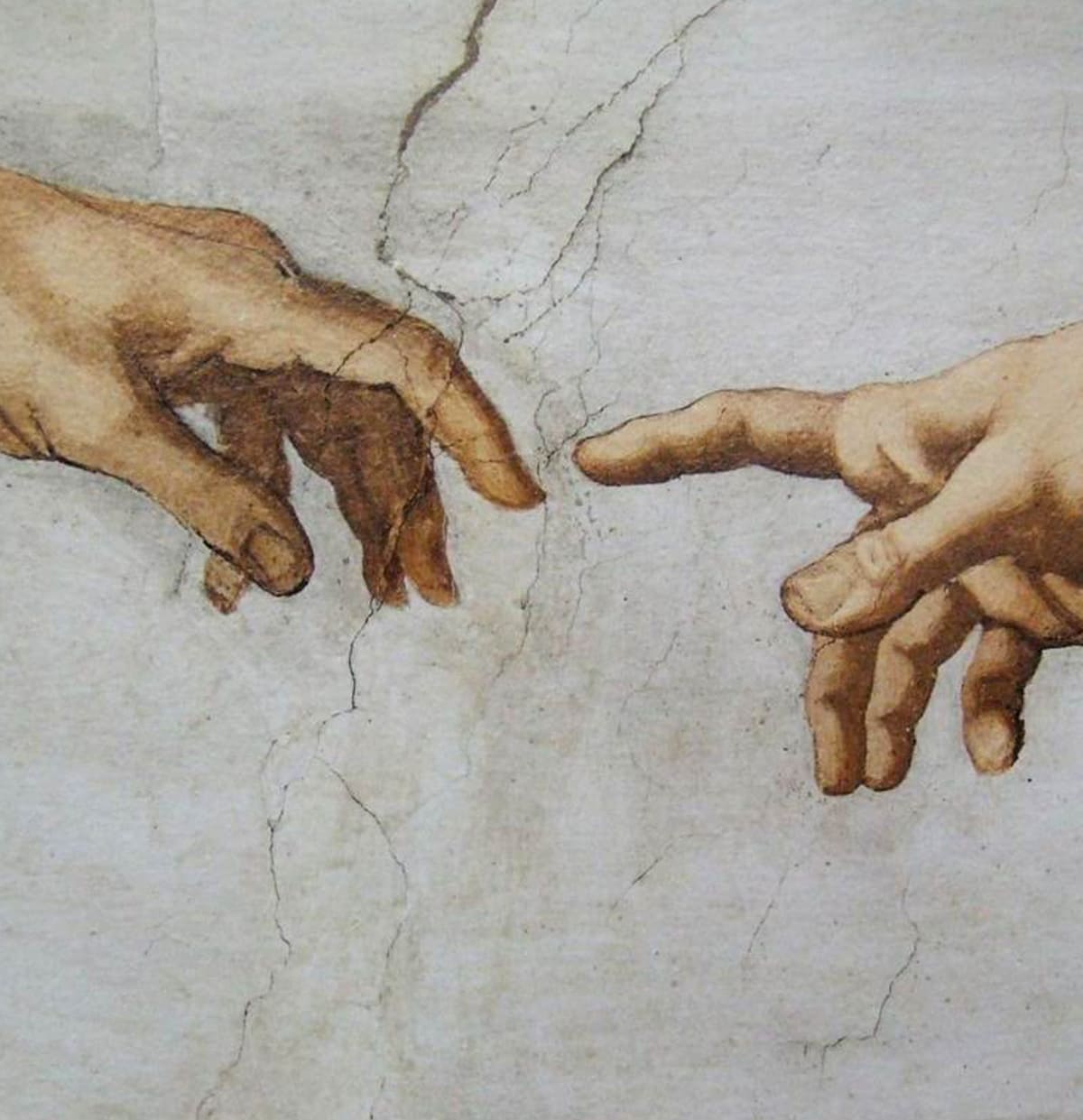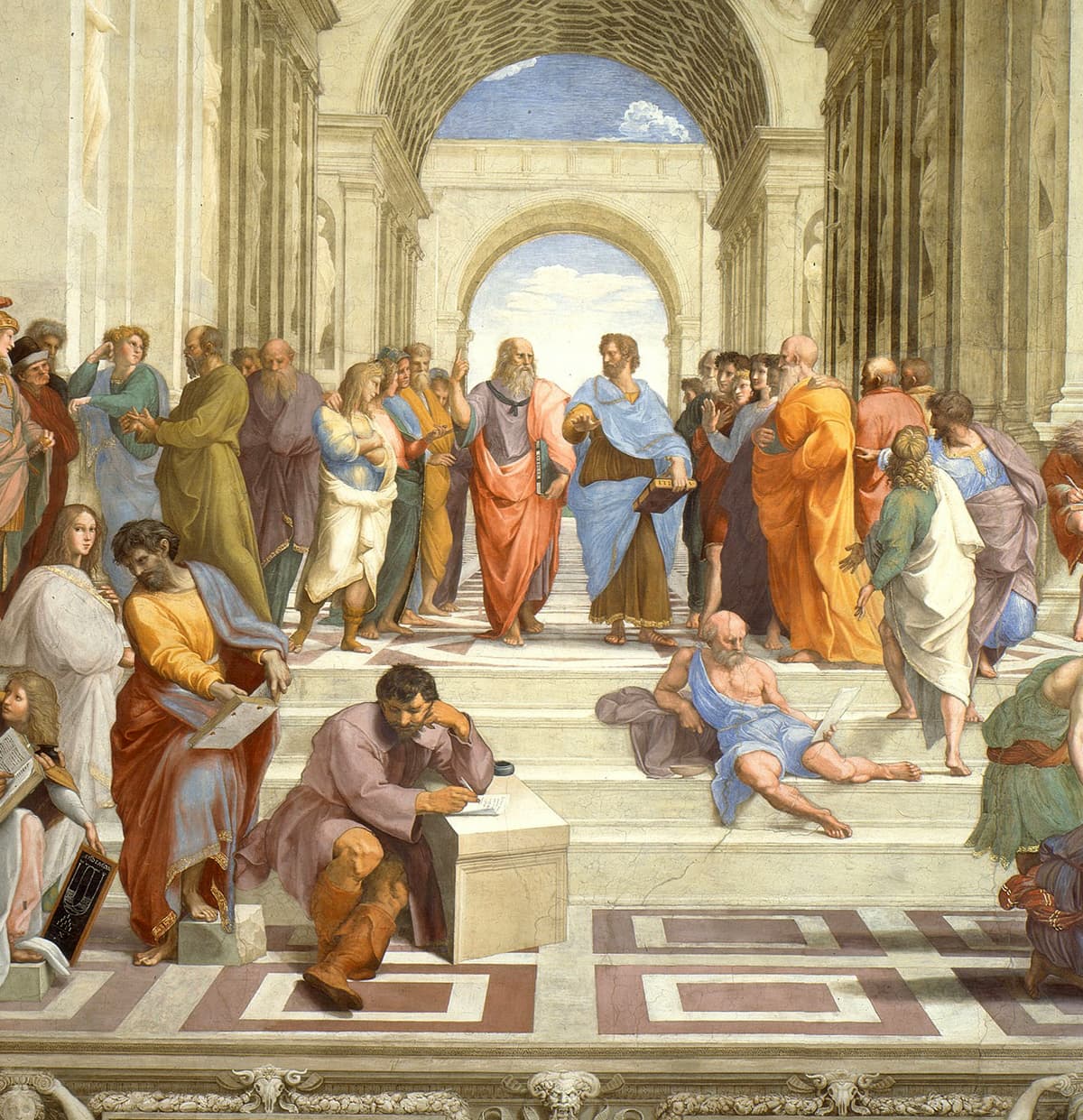Jesus and Mary frame the doors of the church opened wide to receive the elect who wait to enter the place once barred to them until Christ appears to the One from whom he received his glorious Body. Thus the painting provides a set of penultimate contexts: the limbo of the Just after the Fall and the Church after the Redemption, with the ultimate context: the company of Jesus and Mary in the Paradise of Heaven: O Queen of Heaven rejoice, alleluia!
The two holy figures adopt the same postures and occupations as at the Annunciation. Jesus and Mary, the New Adam and the New Eve, restore the new Paradise of Salvation, as meanwhile Old Adam and Eve and the other holy inhabitants of the Limbo of the Just (both Jews and Gentiles: St John the Baptist, Job, et al.) wait in that place of merely natural happiness to enter this regained Paradise. (Perhaps another Flemish image of the Harrowing of Hell)
Three discrete events are thus presented in spiritual and thematic continuity in a single painting. The glorious Body of Christ, which was conceived at the instant of Our Lady’s fiat to the angel Gabriel, appears in the triumph of the resurrection, the living body restored to her motherhood after its disruption in its death.
The other is the liberation of the souls in the Limbo of the Fathers on Holy Saturday (sometimes called “the Harrowing of Hell”).
The apparition follows the pattern of two well-known scenes other than its own.
The first is the Annunciation to the Virgin. Here we look at a Flemish Annunciation with the same basic arrangement of figures, i.e. St Gabriel and Our Lady in prayer cf. with Our Lord and Our Lady in Prayer.
The scenes, even when in open air, exhibit an interior, domestic, cloistered sensibility conducive to prayer and reflection. The school of spirituality which matched this aesthetic in the same years is called Devotio Moderna. This school focused on the individual practice of devotion and careful meditation and preparation for the more frequent reception of the Holy Eucharist; its most important text is the well-known Imitation of Christ.
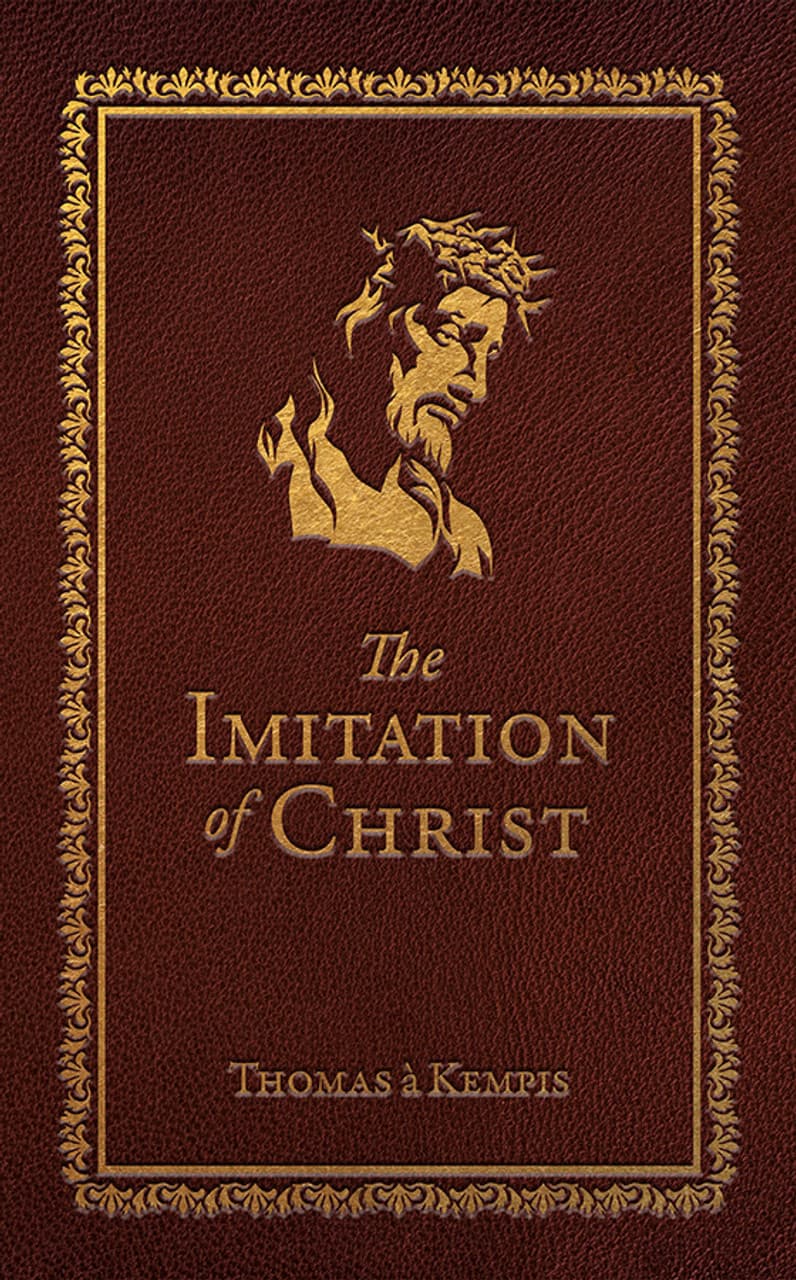
Here is seen how helpful it is to connect Catholic spirituality with the art of the ages which produced it.
This style offered the devotional sensibilities of Portugal and Spain an attractive alternative to the more classicizing and formal style of the budding Italian Renaissance. In the Flemish style the monumental and more fleshy aspects of Italian painting are not so much to be seen.
Intense ascetic devotion takes the place of bodily aestheticism, without losing focus on the experience of the senses even in minute details.
A profound example of this kaleidoscopic potentiality of visual art is this image of the Appearance of the Risen Savior to His Blessed Mother by the Portuguese painter Jorge Afonso (+1525). Afonso is one of the several important painters of Portugal and Spain who in the mid-1400s through about 1525 followed the style and conventions of the Flemish school. This school, which was the focus of Catholic art of Flanders in the Low Countries in what is modern-day Belgium, combines exquisite attention to detail, a “realism of particulars” with devotional and thematic breadth.

